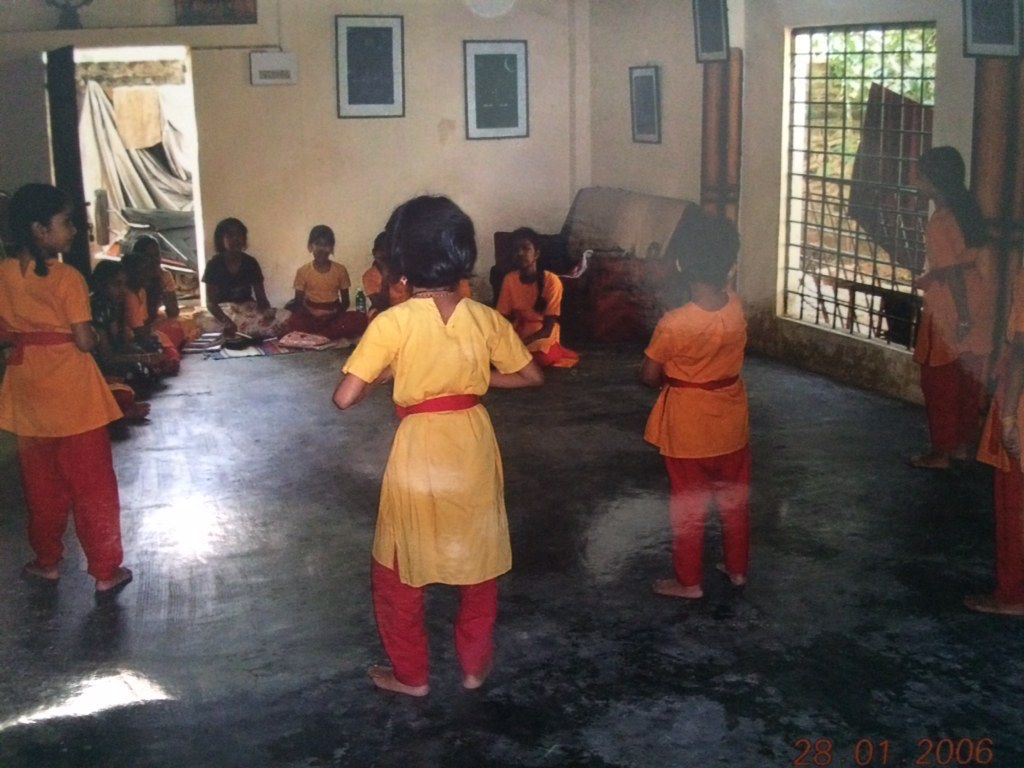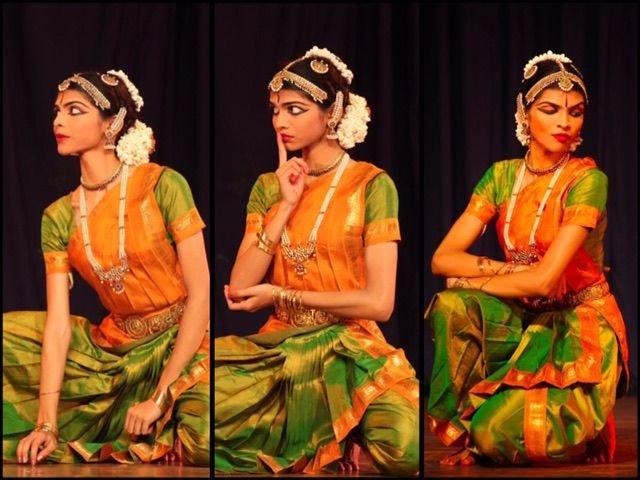Stories that Hide in Walls | NaPoWriMo Day 12
If walls could talk
the ones in the dance hall
would have stories to tell
of how I've grown
(from 4 feet to 5'4'').
They would remember
the things I don't:
the exact moment when I
reached the beam
I had been jumping to get to
(and missing for years,)
just by stretching out my hand,
the day I started wearing
a dance saree to class,
or the choreography
of every dance I've been taught.
Even the floor,
an extension of myself,
would talk
of every step I've taken
even before it was painted red.
Together
they'd produce the ghosts
of all the characters
I've conjured up
to tell stories that
hid in songs.
Krishna,
my child,
my lover,
my god (my god?)
my – self.
Oh! It has seen all the ways I have become
myself.
It has watched my eyes
go from
post to pillar,
searching. for ways
to show
love,
and every other emotion of the navarasas
and instead I find ways
to be
in love,
in emotion,
in heart,
in dance,
in life.
About the Poem
When I was sitting next to my dance teacher today as she took class for the juniors, I looked at the room and realised how long I've been going there (13 years) and how it has seen me grow. When I was 10, it felt like the biggest accomplishment if I was able to jump and even touch the beam the crossed between two walls, and then one day I had grown so much, I could touch it just by raising my hand. I don't remember when the change happened, but it feels symbolic of my goals and dreams as well and how the room and dance has held space for my growth to reach them.

As you can see, this picture was taken in 2006, a year after I started dancing here. I'm the tiny one sitting next to my teacher on the floor. The room looks so different now. The floor is painted red and there are mosquito nets on the windows, but the pillars and pictures are the same.
A little context
In Bharatanatyam, and most Indian classical dance forms, there is both nritta pure dance, consisting of steps and movements and abhinaya, or expressions. The expressions cover nine emotions or the navarasas (rasa literally means juice or essence) which are sringara (love), veeram (valour) roudra (anger), bheebatsam (disgust) karunyam (compassion - yes, that's what my name means!), adbhutam (surprise), haasya (laughter), bhayanaka (fear), and shantam (peace). Within each of these there are several offshoots. For example sringara can be a mother's love, friendship, romantic love, or love for god.
Often, abhinaya pieces require you to take on characters, much like acting, except that you can't speak. Everything is through your eyes, face, and body language. One thing my teacher keeps telling me is that the best way to show an emotion is to feel the emotion and make it personal to your experience. It is through dance that I've learnt to explore so many ways to feel and get to take on roles that I wouldn't take on in every day life.
Often in solo pieces, you have to take on more than one character, or imagine that the character you are speaking to is in front of you, till the audience can believe there's a person there apart from you. It's why I feel like when I'm done with a piece, these characters I conjure up retreat into the walls till I have need for them again.
One of the characters I've explored the most is Lord Krishna, in all his forms of child, lover, god, as well as being the one who has the relationship with him as his mother, lover, or devotee.
Krishna,
my child,
my lover,
my god (my god?)
my – self.

Me, as infant Krishna, trying to steal butter that his mother is churning, promising to keep quiet and behave if she gives him the butter, and then throwing tantrum and saying he won't talk to her because she doesn't
In this piece, I alternate between playing Krishna and his mother for this scene.
It is especially interesting to depict things I'm not used to feeling. I am not highly religious, so to show devotion to a god is difficult, and then to become that god is another challenge. But I think for me, it's also how I've formed my own view of how these gods are not beyond us but are externalisations of the things we can't contain within ourselves.
The eyes from post to pillar refer to eye exercises we do to work on expressions and improve the power our eyes have, since when we perform our eyes have to speak to people sitting rows away. And again, as I watch my teachers or find different ways to show an emotion, I am constantly learning to find ways to be in that emotion and feel it. The pillars have been the objects of my love, my anger, my surprise, my desperation, my frustration with not getting things, my excitement at learning something new, and the container for all growth and self discovery.
So, if you want to learn my story, ask the walls of my dance hall. They'll sing it to you in a song you can dance to.
Love this to the moon and back. I've always seen how Bharatanatyam has been a part of you.
And to see you reflect on it, from 2005 to now. It's sheer joy.
I went to rasika from 2004-2010 and I still remember the floor, the changing room, the shift from salwar to half-saree. It never really leaves me. The gurukula system that has stayed alive because of dance comes back to me in so many dreams.
And this is like a dream realised. <3
You are always too kind. Thank you.
Yeah, we often take it for granted that these elements and traditions become almost a way of life, never leaving us.
Sitting on the other side of the class yesterday, I could almost see it all happening before my eyes. And then to realise I'm still nowhere close to where I want to be, and to continue dreaming.
It's pretty awesome how you've stayed with dance for so long. I don't think I've stuck to anything like that. That love really reflects in the poetry and the context is a nice introduction to your passion for steemit.
Thanks! Yeah, sometimes I forget how long it's been especially because I feel like every time I return to the basics I'm learning something new.